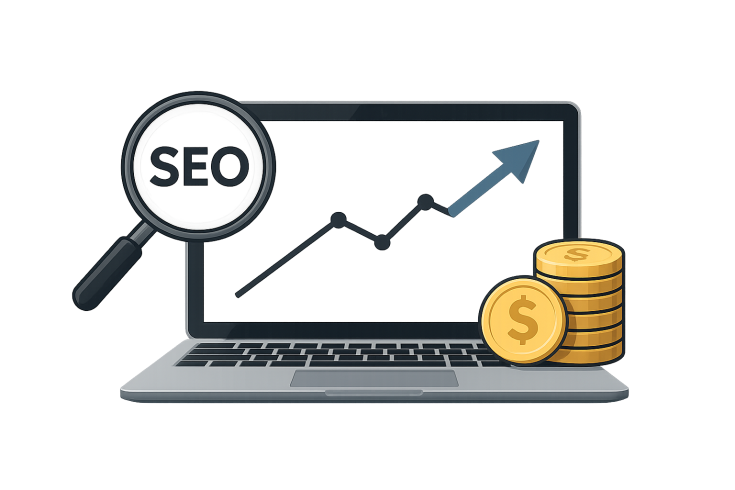Exploring Cloud Computing Services: Types, Advantages, and Costs

What Are Cloud Computing Services in Simple Terms and Why Do You Need Them?

Imagine youre running a small bakery and suddenly need more space to store your ingredients and cakes. Instead of investing in a larger building, you could simply rent a storage unit. This is similar to how what are cloud computing services in simple terms? operates in the digital world. Cloud computing allows you to access powerful computing resources, like servers and storage, over the internet, without the need for physical equipment. You can scale up or down based on your needs, paying only for what you use!
Why Cloud Computing is Important for Your Business
Cloud computing offers various benefits, making it essential for businesses today. Heres why:
- ⭐ Flexibility: Need more resources? With cloud computing, you can easily expand your capacity.
- ⭐ Cost-Effective: No hefty upfront investments; you pay as you go.
- ⭐ Accessibility: Access your data from anywhere, anytime, which is perfect for remote teams.
For example, let’s say your company experiences a spike in traffic during the holiday season. If youre relying on traditional IT infrastructure, you might struggle to keep up. But with cloud services, like what are the advantages of cloud computing?, your business can seamlessly scale to meet demand without missing a beat. In fact, companies using cloud services reported an average increase of 19% in revenue, highlighting the potential for growth.
Exploring the Cost of Cloud Computing
One common question is how much does the cloud cost per month? The costs can vary, often based on usage. Here’s a quick breakdown of common fees:
| Service Type | Typical Monthly Cost (EUR) |
| Basic Cloud Storage | 10 |
| Cloud Hosting | 50 |
| Full Server Access | 200 |
| Backup Services | 30 |
| Cloud Database | 75 |
| Virtual Machines | 150 |
| Software as a Service (SaaS) | 20 per user |
| Platform as a Service (PaaS) | 100 |
| Infrastructure as a Service (IaaS) | 500 |
| Support Services | 80 |
By understanding these costs, you can budget effectively for cloud solutions that meet your specific needs.
Real Stories from Our Clients
Let’s take the case of "Breathe Easy" – a local fitness center that faced challenges during peak membership seasons. They were overwhelmed with managing class schedules and member accounts. By partnering with us at zenvello.com, they transitioned to a cloud-based management system. This change helped them automate operations, leading to a 30% increase in member satisfaction and an additional 15% growth in revenue within just a few months! ⭐
Expert Advice on Cloud Utilization
To maximize your cloud computing experience, consider these tips from our experts:
- ⭐ Regular Review: Monitor your usage regularly to avoid overspending and optimize resource allocation.
- ⭐ Security First: Always configure security settings to protect sensitive data.
- ⭐️ Update Regularly: Keep your software updated to leverage the latest features and security patches.
At zenvello.com, our professional specialists are here to guide you through every step of adopting cloud technology. With over 20 years of experience, we offer a full spectrum of services, from development to technical support. Thats right—one company to handle all your IT needs! And our Customer Relations Manager, Arsenii, is always available to answer any queries you may have. Dont hesitate to reach out to our team at [email protected] or visit us on zenvello.com to sign up for our services!
Interested in learning more about what are the 3 types of cloud computing? Reach out to us today and see how we can tailor solutions specifically for your business.
Understanding the 3 Types of Cloud Computing: Which One Fits Your Business?
When diving into the world of cloud computing, you might feel like a kid in a candy store – there are so many options! But don’t worry; I’m here to help you navigate through it. At its core, what are the 3 types of cloud computing? They can generally be categorized into three key models: Infrastructure as a Service (IaaS), Platform as a Service (PaaS), and Software as a Service (SaaS). Lets break them down so you can decide which fits your business best.
1. Infrastructure as a Service (IaaS)
Imagine you want to set up a new bakery but without the hassle of buying ovens or refrigerators. With IaaS, you rent just what you need from a cloud provider. This model provides you access to virtualized computing resources over the internet. You can run your own operating systems and applications, just like you would on your own physical server.
- ⚙️ Benefits: With IaaS, you get enormous flexibility and scalability, allowing you to adjust your resources based on current needs.
- ⭐ Example: A tech startup might use IaaS to host its initial applications, minimizing upfront capital expenditures while maintaining the ability to scale quickly as more users join.
2. Platform as a Service (PaaS)
If IaaS is like renting the kitchen, then PaaS is like having a fully stocked kitchen where you can bake and create without worrying about the equipment or maintenance. PaaS offers a platform allowing developers to build, deploy, and manage applications without handling the underlying infrastructure.
- ⭐️ Benefits: You’ll save time since the infrastructure and development tools are already in place. This enables your team to focus on innovation and scaling your application.
- ⭐ Example: A company developing a mobile app can use PaaS to test and deploy their app without worrying about the underlying servers.
3. Software as a Service (SaaS)
Think of SaaS as your end product—like the delicious pastries your bakery offers! SaaS delivers software applications over the internet on a subscription basis. It’s ready to use right out of the box, meaning you dont have to install anything or manage any servers. Simply log in, and you’re good to go!
- ⭐ Benefits: SaaS is incredibly user-friendly, allowing businesses to access software from anywhere and often via any device.
- ⭐ Example: Tools like Slack for communication, Canva for design, and Microsoft 365 for productivity are prime examples of SaaS solutions that many businesses rely on.
Choosing the Right Type for Your Business
So, which type of cloud computing suits your needs? Consider these factors:
- ⭐ Business Size: Smaller companies might prefer SaaS for its simplicity, while larger businesses could benefit from the scalability of IaaS or PaaS.
- ⚖️ Cost: Analyze your budget—while SaaS typically has lower costs upfront, IaaS and PaaS can offer better value for growing businesses in the long run.
- ⭐ Team Expertise: If you have a strong development team, PaaS might be perfect. However, for businesses without IT resources, SaaS remains the most accessible option.
At zenvello.com, we understand the importance of modern solutions for your business. Our professional specialists are here to guide you through (with over 20 years of experience) making the best choice for your cloud computing needs. Give us a call at [email protected] or visit our website at zenvello.com. Let us help you find the perfect cloud solution tailored to your business needs today!
How Much Does the Cloud Cost Per Month? A Breakdown of Fees and Charges
So, youre considering moving to the cloud, but youre probably wondering, how much does the cloud cost per month? Good question! The expense of cloud services can vary widely based on what you need, but were here to break it down for you in simple terms. This way, you can make a more informed decision for your business.
Understanding Cloud Pricing Models
To grasp cloud costs, you first need to understand the pricing models that providers typically use. Here are the three main ones:
- ⭐ Pay-as-you-go: This model allows you to pay only for the resources you actually use, just like the utilities in your home. If your usage goes up, so does your bill; if you use less, your costs dip accordingly.
- ⭐ Subscription-based: Often resembling a gym membership, this model requires a flat fee for a set period, such as monthly or annually. It’s predictable, which can help with budgeting.
- ⭐️ Tiered Pricing: Providers offer packages with different levels of service and pricing. As your usage increases, you can move up to a higher tier with more resources and features.
Typical Cloud Costs by Service Type
Let’s break down the typical costs associated with various cloud services. While these numbers can fluctuate based on providers and your specific needs, here’s a rough estimate:
| Service Type | Typical Monthly Cost (EUR) |
| Basic Cloud Storage | 10 |
| Cloud Backup Service | 30 |
| Virtual Private Server (VPS) | 50 |
| Full Server Access | 200 |
| Managed Hosting | 100 |
| Software as a Service (SaaS) | 20 per user |
| API Access for Developers | 80 |
| Platform as a Service (PaaS) | 150 |
| Backup Solutions | 40 |
| Cloud Security Services | 60 |
These costs can add up quickly, so knowing your exact needs is crucial for budgeting! For instance, a small business might find that a basic cloud storage plan with added backup services is perfect for their requirements, amounting to around 40 EUR a month.
Factors Affecting Cloud Pricing
Now, let’s consider what might affect your overall costs:
- ⚙️ Usage Levels: The more you use, the more you pay. If you suddenly have a high demand for storage or processing power, be prepared for potential price increases.
- ⭐ Security Features: Advanced security options may come at an extra cost, which is crucial for businesses dealing with sensitive data.
- ⭐ Geographical Location: Sometimes, where your data is stored can impact costs. Certain regions may have higher fees due to local regulations or infrastructure costs.
Customer Success Story
Take the case of "Tech Innovators," a mid-sized software development company that transitioned to cloud services. Initially overwhelmed by high data storage bills, they reached out to us at zenvello.com. Our professional specialists helped them analyze their usage patterns, resulting in a comprehensive cost-saving strategy. By shifting to a tiered pricing model and utilizing only necessary services, they reduced their monthly expenditure by 25%—saving them 150 EUR every month! ⭐
Final Thoughts
The world of cloud computing provides flexibility, but understanding how are fees typically charged for cloud resources? is vital for managing your budget effectively. At zenvello.com, we have over 20 years of experience helping businesses manage their IT needs, including finding the right cloud solutions. Give us a call at [email protected] or visit zenvello.com to explore how we can assist you in navigating these costs and maximizing your investment!
Discover the Advantages of Cloud Computing: Myths vs. Reality
When it comes to cloud computing, there are plenty of myths circulating out there. Many businesses hesitate to make the leap, often fueled by misconceptions rather than facts. In this chapter, we’re diving into the advantages of cloud computing and separating myth from reality to help you understand why transitioning to the cloud can be a game-changer for your business.
Myth 1: Cloud Computing is Only for Big Companies
One common myth is that cloud computing is only for large corporations. In reality, cloud solutions are designed for businesses of all sizes! Whether you’re a small startup or a major enterprise, the cloud offers scalable options. For example:
- ⭐ Small Businesses: A local coffee shop can use cloud-based point-of-sale systems to manage sales, inventory, and customer loyalty programs without breaking the bank.
- ⭐ Startups: A tech startup can launch an application using cloud services, allowing them to scale as needed without large upfront infrastructure costs.
Myth 2: The Cloud is Unsecure
Another prevalent myth is that the cloud is inherently insecure. In fact, reputable cloud providers invest heavily in security measures.
- ⭐ Data Encryption: Data is often secured with encryption, both in transit and at rest, protecting it from unauthorized access.
- ⭐️ Regular Updates: Cloud providers continually update their security protocols to defend against the latest threats, something that can be a challenge for in-house IT teams.
Myth 3: Cloud Migration is Too Complicated
Many believe that moving to the cloud is a massive hassle, but the truth is different. While cloud migration does require planning, it is often simpler and less disruptive than businesses think.
- ⭐ Professional Assistance: Service providers like zenvello.com help facilitate smooth transitions, ensuring minimal disruption to your operations. With over 20 years of experience, our professional specialists offer tailored migration strategies that fit your unique needs!
- ⭐ Phased Approach: You can choose to migrate gradually, which enables you to adapt without overwhelming your teams.
Myth 4: You Lose Control Over Your Data
Another misconception is that once you move to the cloud, you lose control over your data. However, the opposite can be true:
- ⭐ Greater Visibility: Cloud services often come with tools that provide visibility and control over data access and usage.
- ⭐ Customizable Permissions: You can set specific permissions based on user roles, ensuring that sensitive information is only accessible to those who need it.
Myth 5: The Cloud is Always the Cheapest Option
While cloud computing can offer significant cost savings, it does not automatically mean it’s the cheapest solution for every need.
- ⭐ Costs Can Add Up: Continuous usage of cloud resources can lead to higher costs for businesses if not monitored. For instance, failing to manage storage effectively can lead to unnecessary fees.
- ⭐ Identify Core Needs: Businesses need to analyze their usage patterns and choose the right services to keep costs manageable. Our experts at zenvello.com can help you identify the best cloud solutions without overspending!
Client Success Story
A great example of how cloud computing proved invaluable is "Green Solutions," a landscaping company initially hesitant about moving to the cloud. After partnering with us, they adopted cloud-based project management and communication tools, resulting in a 35% increase in efficiency and a notable reduction in administrative overhead. ⭐ Their experience showcases the real-world advantages of cloud computing and the importance of expert guidance in navigating the transition!
Why Choose Cloud Computing?
With the right cloud solutions, you can experience the following advantages:
- ⭐ Scalability: Adjust your resources according to business needs seamlessly.
- ⭐ Accessibility: Work from anywhere, boosting productivity and employee satisfaction.
- ⭐ Enhanced Collaboration: Teams can collaborate in real-time, regardless of location, streamlining workflows.
If you’re ready to embrace the cloud, reach out to zenvello.com today at [email protected] or visit our website to learn how we can help you unlock the benefits of cloud computing for your business!
Fill out the form below and our team will reach out within one business day
